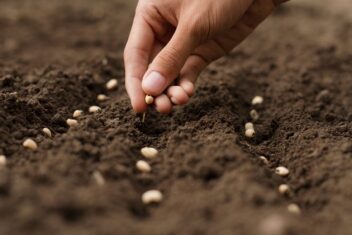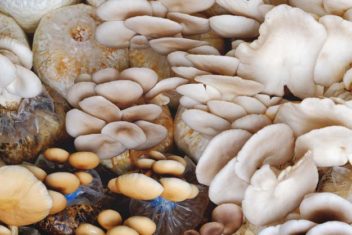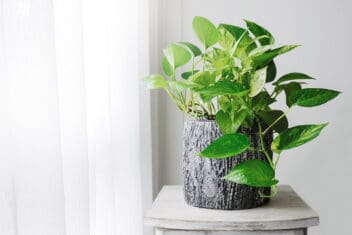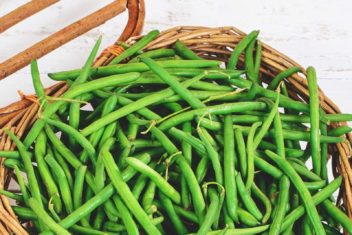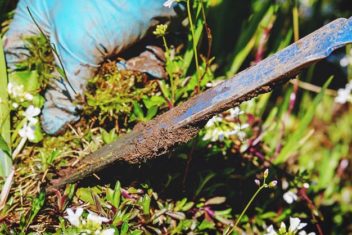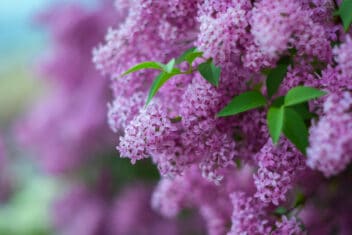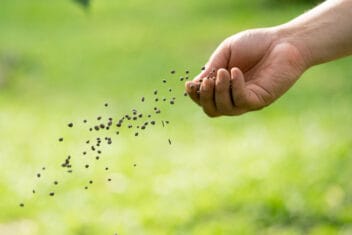Are you drowning your plants? You very well could be.
It sounds counterintuitive – don’t plants need lots of water to live?
Yes – and no. I’ve found that I’m much more likely to overwater my plants than to underwater them. Call me overzealous or over-enthusiastic, but it’s the truth.
The good news is that identifying signs of overwatering is pretty easy. While many of these can be confused for signs of underwatering (which presents quite the conundrum to the befuddled gardener!), once you get proficient at identifying overwatering symptoms, you won’t have to worry about doing it again.
Here are some ways to tell that you are overwatering your plants – and what to do about it if you are.
What Are the Effects of Overwatering?
Just as you can’t live your entire life underwater, neither can plants – or their roots.
While all plants need water to survive, the amount that each kind of plant needs will vary. A succulent will need far less water, often needing to be watered or misted just once or twice a month, than a tropical houseplant or a container filled with leafy greens. These might need to be watered once a week – or even once a day, in some cases.
Plants need to breathe. They breathe through their roots and when there is too much water, the roots can’t take in the gases that they need. Essentially, overwatering your plants can suffocate them.
Overwatering can present other problems as well. Fungal diseases, such as root rot, are far more common in overwatered plants. Many pests strike plants when they are weakened from too much water as well. These diseases and pests can often be the nail in the coffin – if the overwatering didn’t kill your plants, the pest or disease likely will.
Of course, all plants need water. However, figuring out exactly how much water your plants need is a talent that many gardeners don’t have – or at the very least, need some practice in.
How to Tell if Your Plants Are Overwatered
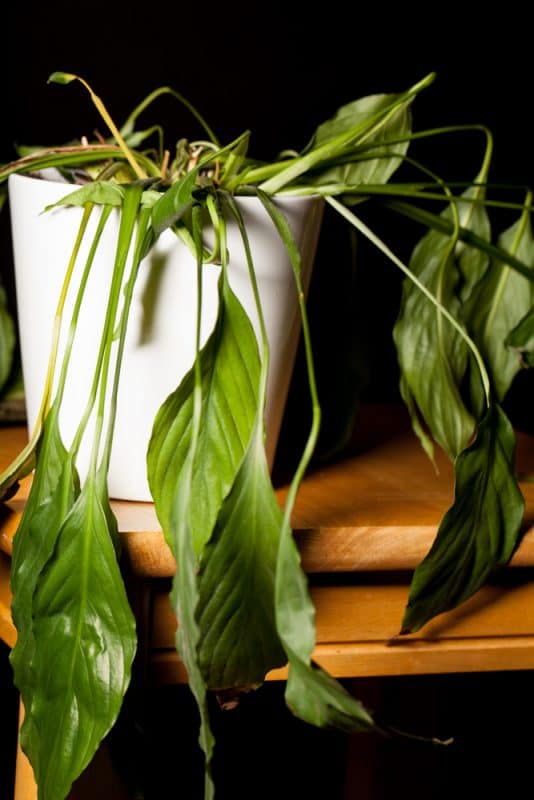
Here are some of the most common signs of overwatering to watch out for in your indoor plants.
1. Wet and Wilted
Wilting is a telltale sign of overwatering, but the problem is that wilting is also a sign of underwatering. Therefore, you’ll have to consider this symptom in conjunction with some of the other ones we’ll mention below.
If your plant looks like it’s wilting, but the soil is wet, it’s being overwatered. The same goes for a plant that is green and supple yet still wilting. If your plant has dried out, it will be brown and crispy instead.
2. Brown Leaves
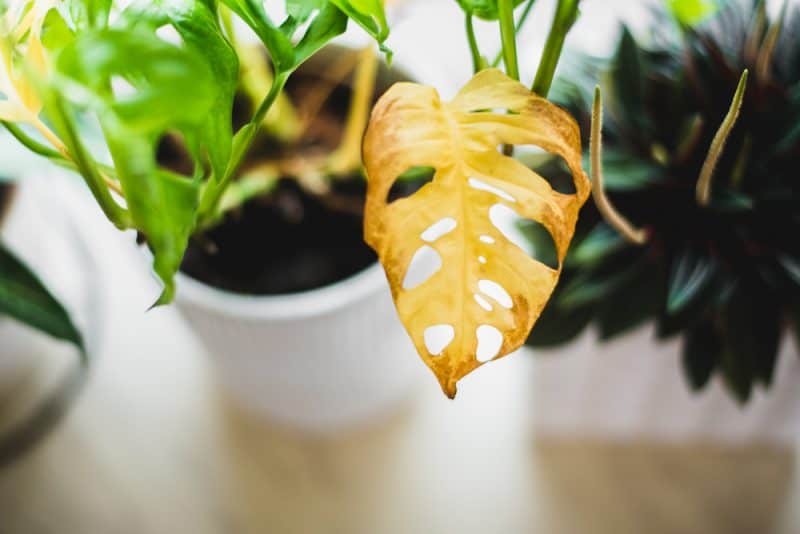
Remember in the last point how I mentioned that brown, crispy leaves can be a sign of underwatering? Not to shake things up too much on you, but it’s important to note that brown leaves can also be a sign of overwatering, too.
The key here is feeling the leaves. Overwatered leaves might be brown but they won’t be crispy, as under-watered leaves will. Instead, they might feel rotten or squishy.
You’ll also have to check the soil. If it’s too much water, you’ll be able to tell by sticking your finger in the soil. Does it feel dry? You need to water. If it feels soggy, hold off and let the soil dry out before you water again.
3. Standing Water on the Soil
This is an obvious sign of overwatering – and it could also be a sign that you need to transplant your plants into a better-draining container. If water is standing on the soil (or you have water pooling in the saucer or container that your plant is nestled inside), then your plants are in jeopardy. Don’t water again until the soil is dry and all the pooled or standing water is gone.
4. Edema
Edema is when a plant’s cells expand and become stressed. This can often happen when a plant absorbs more water than it needs.
When this happens, the plant cells will be so filled with water that they are on the verge of rupturing.
How will you know that your plants have edema? You’ll see lesions or blisters on the plant. These lesions will eventually rapture and turn to dark or white scar tissue. You might also notice indentations on the tops of your leaves.
5. Root Rot

Root rot is a fungal problem that is almost always caused by overwatering. When the soil is over-saturated with water, it makes it more difficult for the roots to breathe. They will then drown and rot. Root rot will cause the plants’ roots to become brown, gray, and slimy – eventually, this will cause widespread wilting.
The sad thing about root rot is that once it sets in, it cannot be reversed. You will have to remove your plant right away so the rot doesn’t spread to other healthy plants.
6. Yellow Leaves
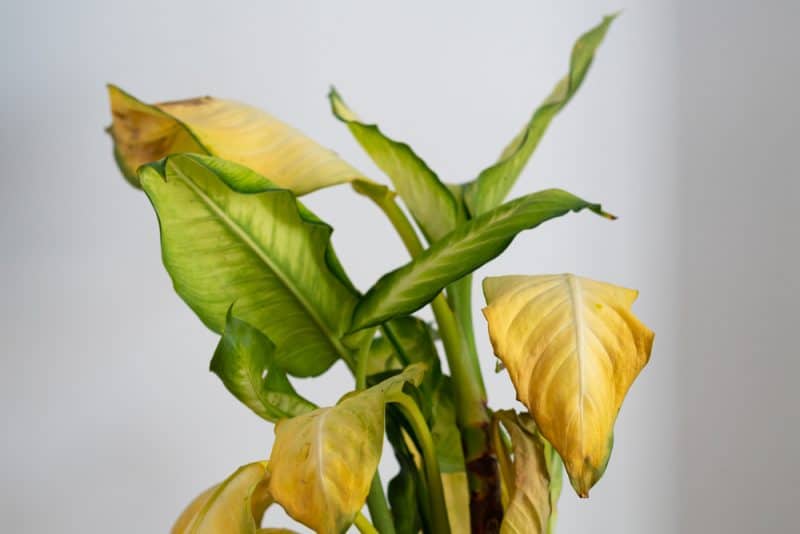
Leaves that yellow and fall off a plant can be symptoms of many problems, such as pest infestations or diseases. However, they often signal overwatering, too. If you notice both new growth and older leaves yellowing and falling off your plant, overwatering could be to blame.
How to Fix an Overwatered Plant
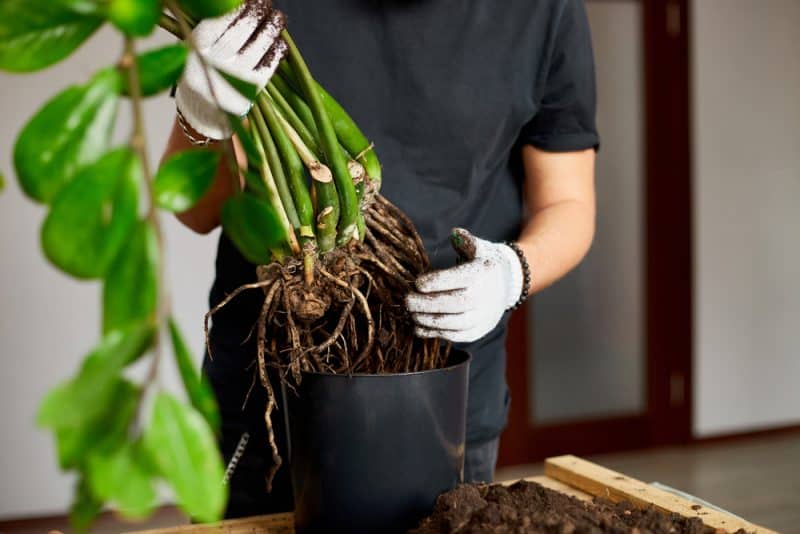
First, stop overwatering! Sounds easy, right?
Don’t water until the soil actually needs it. Feel the top of the soil. If it’s damp, you don’t need to water – but if it’s dry, it might be time to water (except some drought-tolerant plants, like succulents, that can be allowed to really dry out between waterings).
If you are growing your plants in a container (or are dealing with seedlings that you started indoors and then overwatered), a quick fix for oversaturation is to transplant. Put your seedlings or container-grown plants into new containers. Make sure these containers are filled with dry yet fertile potting soil and bury the plant up to the first set of leaves.
You should then work to get yourself on a better schedule when it comes to watering your plants. There’s no guide as to how often you should water your plants, either those that are grown in the garden outdoors or those that might be grown in containers. That’s because each plant has unique watering needs.
While one kind of plant might need to be watered or misted daily, another might require watering just once a month or less. Therefore, it’s important to read up on your plant’s specific needs – and to reflect those needs when you are deciding how often to water. For outdoor-grown plants, using tools like rain gauges and automatic sprinkler systems can help you keep track of soil moisture and get your habit of overwatering under control.
Don’t panic if you accidentally overwater your plant. In most cases, you can reverse the overwatering issue by calming down for a few days and letting the soil dry out. Address the problem quickly and you should still be able to save your plant.
And if you’re a bit heavy-handed with the watering can, don’t despair. There are plenty of plants that thrive in wet conditions. Some to consider include cranberries, viburnum, hibiscus, swamp azaleas, rose mallow, or astilbe, just to name a few.
You may have to consider growing a few of these swamp-loving plants until you get your watering habits under control.


